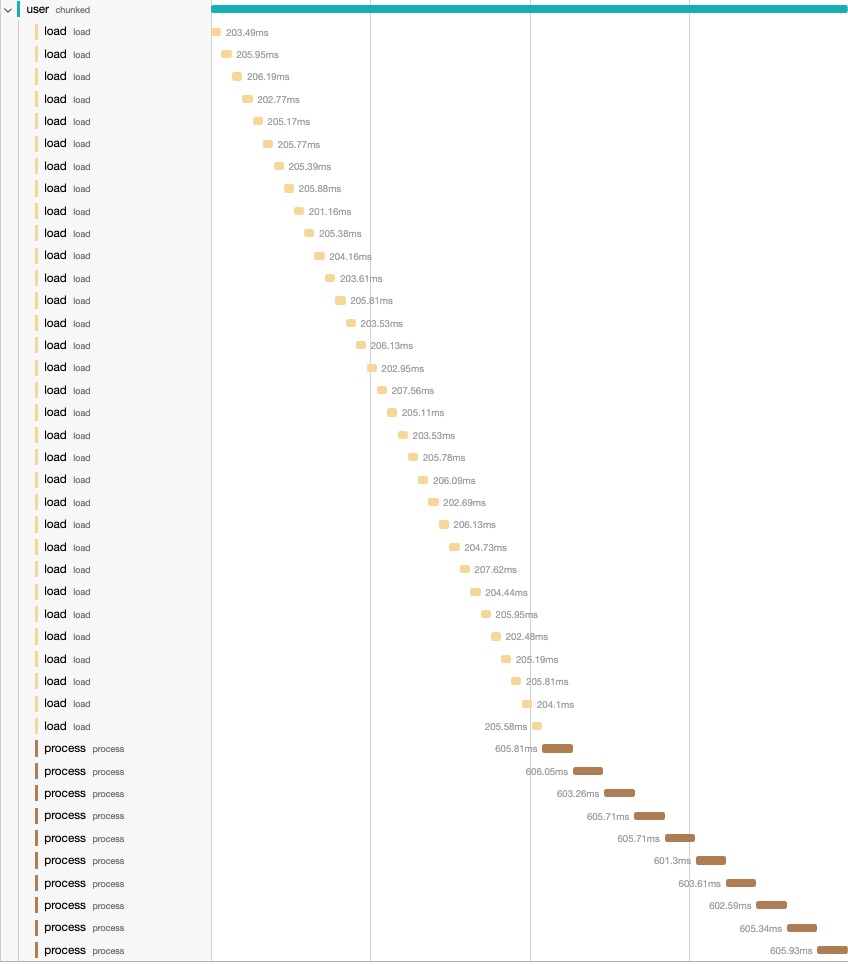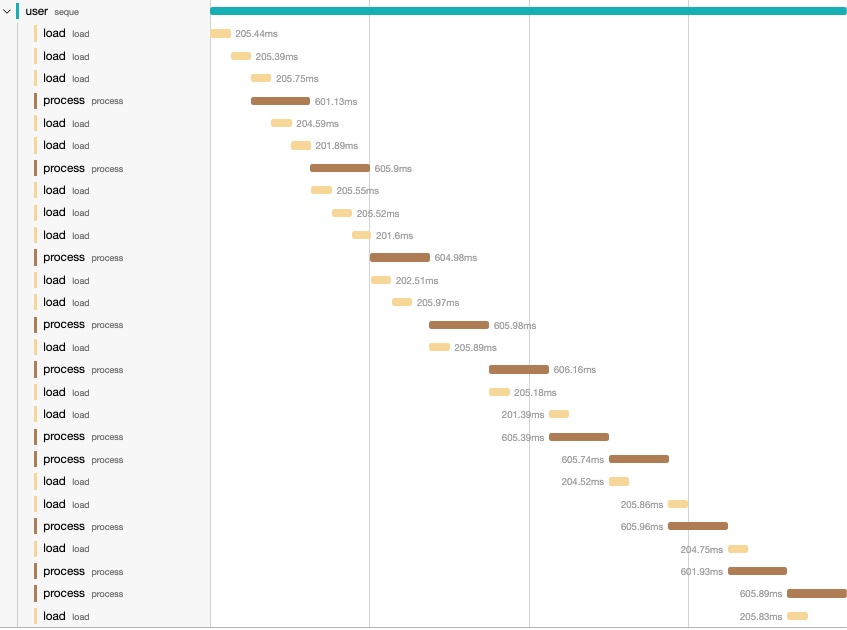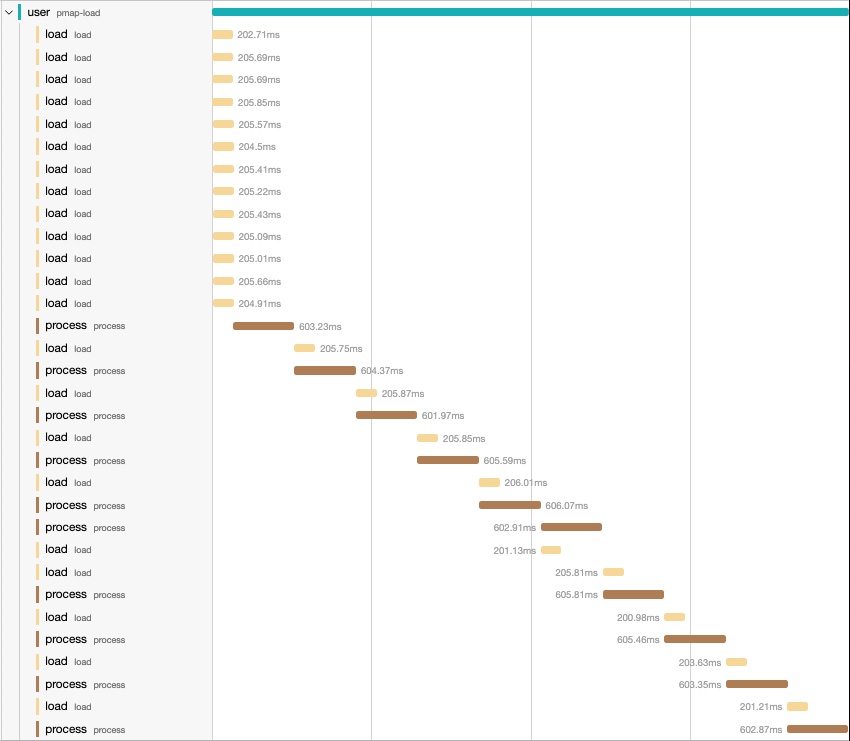Originally posted at: https://redefine.io/blog/buffered-sequences/
The Clojure core namespace boasts an impressive array of functions, numbering over 600 by my estimation. Even with many years of Clojure development under my belt, I still stumble upon hidden treasures. In this post, I’ll delve into how the consumption of various lazy sequences influences computation. Lazy sequences have been a staple in Clojure since version 1.0, so they’re hardly a novelty. There are distinct types of lazy sequences in Clojure: the “truly” lazy ones, chunked sequences, and “buffered” sequences. I believe most Clojure developers will be familiar with at least the first two types. This article primarily shines a spotlight on the “buffered” sequences (or queued sequences) and their unique behaviors. Through a series of examples, we’ll navigate the nuances of these sequences and observe their behaviors upon consumption.
Lazy sequences
In its simplest form, a lazy sequence in Clojure can be constructed using
lazy-seq. lazy-seq takes a
body of expressions and it delays the evaluation until it is requested,
similarly to an iterator that executes the body only when the .next() method
is invoked. For instance, to create a lazy sequence of all integer numbers we
can write:
(defn my-lazy-seq
([]
(my-lazy-seq 0))
([n]
(lazy-seq
(cons n
(my-lazy-seq (inc n))))))
(take 10 (my-lazy-seq))
;; => (0 1 2 3 4 5 6 7 8 9)
There are many other functions in the Clojure core which
return lazy sequences as well. For example we could rewrite the previous
function using iterate:
(defn my-lazy-seq
[]
(iterate inc 0))
(take 10 (my-lazy-seq))
;; => (0 1 2 3 4 5 6 7 8 9)
The two functions are equivalent. To illustrate the different behaviours let’s
introduce two functions: load and process. For the sake of the example let’s
assume that my-lazy-seq returns the path of files to be processed, or the ids
of some database records to be processed, the function load will simulate the
retrieval from the db, and the function process represents a function
performing computations on the retrieved data.
(defn load
[v]
(printf "Loading: %d \n" v) (flush)
(Thread/sleep 200)
v)
(defn process
[v]
(printf "Processing: %d \n" v) (flush)
(Thread/sleep 600)
v)
To process the first 10 items of my-lazy-seq we could write:
(->> (my-lazy-seq)
(map load)
(map process)
(take 10))
There are a few things to point out from the above lines:
- evaluating this expression won’t cause the execution of neither
loadnor theprecessfunction. mapandtakeboth return lazy sequences, therefore evaluating the expression will only create a chain of lazy sequences which upon consumption will cause a chain reaction ofload/processcalls.- evaluating the code in a REPL or an IDE will certainly trigger the
execution of the
loadandprocessfunctions because the REPL will attempt to print the result. The default behaviour of the REPL is to print the content of a sequence up to the*print-length*. It is good practice to set a limit into to your REPL configuration. For example:(set! *print-length* 100)will tell the REPL to only consume and print the first 100 items of a sequence. The default value isnilwhich tells the REPL to consume it all. Evaluating lazy infinite sequences likemy-lazy-seqon the REPL without*print-length*will cause the REPL to hang. - For completeness I will add a
doallat the end of each evaluation to force the lazy sequence to be realized regardless of a specific*print-length*configuration.
(->> (my-lazy-seq)
(map load)
(map process)
(take 10)
(doall))
;; Loading: 0
;; Processing: 0
;; Loading: 1
;; Processing: 1
;; Loading: 2
;; Processing: 2
;; Loading: 3
;; Processing: 3
;; Loading: 4
;; Processing: 4
;; Loading: 5
;; Processing: 5
;; Loading: 6
;; Processing: 6
;; Loading: 7
;; Processing: 7
;; Loading: 8
;; Processing: 8
;; Loading: 9
;; Processing: 9
;; => (0 1 2 3 4 5 6 7 8 9)
That’s pretty much what we expected. Every item of the lazy sequence is loaded first and then processed in a strict succession.
To better visualize what is happening I’ve instrumented the load and process
functions with μ/trace
and published the traces into Jaeger.
Looking the above execution this is what I get:

μ/trace makes it incredibly easy to visualize the sequence of operations. I
use it all the time to reinforce my mental model of how some operations are
executed in larger applications.
Chunked sequences
Chunked sequences are an optimisation to reduce the allocation.
A chunked sequence instead of realizing one element at the time,
it will realize a chunk of them (usually 32). From a consumer
point of view, it is almost totally transparent. The prime
example of chunked sequences is the
range function.
(range 10)
;; => (0 1 2 3 4 5 6 7 8 9)
(chunked-seq? (range 10))
;; => true
(chunked-seq? (my-lazy-seq))
;; => false
The chunking effect can be seen when applying a transformation like in our
previous example. If we replace my-lazy-seq with range, we see something
interesting.
;; clean
(->> (range 100)
(map load)
(map process)
(take 10)
(doall))
;; Loading: 0
;; Loading: 1
;; Loading: 2
;; Loading: 3
;; Loading: 4
;; Loading: 5
;; Loading: 6
;; Loading: 7
;; Loading: 8
;; Loading: 9
;; Loading: 10
;; Loading: 11
;; Loading: 12
;; Loading: 13
;; Loading: 14
;; Loading: 15
;; Loading: 16
;; Loading: 17
;; Loading: 18
;; Loading: 19
;; Loading: 20
;; Loading: 21
;; Loading: 22
;; Loading: 23
;; Loading: 24
;; Loading: 25
;; Loading: 26
;; Loading: 27
;; Loading: 28
;; Loading: 29
;; Loading: 30
;; Loading: 31
;; Processing: 0
;; Processing: 1
;; Processing: 2
;; Processing: 3
;; Processing: 4
;; Processing: 5
;; Processing: 6
;; Processing: 7
;; Processing: 8
;; Processing: 9
;; => (0 1 2 3 4 5 6 7 8 9)
Notice that despite the fact we only consumed 10 items from the result, 32 items
were realized from the first sequence and loaded, then (map load) returns a
true lazy sequence so only 10 items were processed.
(chunked-seq? (range 100))
;; => true
(chunked-seq? (map inc (range 100)))
;; => false
If we look at the execution trace of our previous example we can see that nicely:

As you attempt to realize the first item, the initial chunk of 32 items is realized. All these items remain in memory until the chunk is entirely consumed. Once the consumer requests the 33rd item, a new chunk of 32 items is realized.
Chunked sequences are beneficial when the cost of realizing each item is minimal, offering an optimization in terms of allocations.
To create a chunked sequence the Clojure core provides a set of functions:
chunk-buffer,
chunk,
chunk-append,
chunk-cons,
chunk-rest and
chunked-seq? which we
have already seen.
Buffered sequences
Buffered sequences share some similarities with chunked sequences, but they exhibit a slightly different behavior. Their main goal is to minimize the wait time for consumers by storing a set number of realized items in a buffer (or queue). Buffered sequences maintain a fixed-length buffer. A Clojure agent works diligently to ensure the buffer is consistently populated with realized items. Consequently, when the consumer requires a new item for processing, multiple items are readily available.

On the right, there’s an unrealized lazy sequence. A Clojure agent will try to fill the buffer as swiftly as possible. The items in the buffer are always in a realized state. The consumer then retrieves items from the buffer in the same sequence order (FIFO) for further processing.
The Clojure core to build such sequences is seque.
Let’s examine how buffered sequences impact computation, using our previous example.
(->> (my-lazy-seq)
(map load)
(seque 5) ;; buffer of 5
(map process)
(take 10)
(doall))
;; Loading: 0
;; Loading: 1
;; Loading: 2
;; Processing: 0
;; Loading: 3
;; Loading: 4
;; Processing: 1
;; Loading: 5
;; Loading: 6
;; Loading: 7
;; Processing: 2
;; Loading: 8
;; Loading: 9
;; Processing: 3
;; Loading: 10
;; Processing: 4
;; Loading: 11
;; Processing: 5
;; Loading: 12
;; Processing: 6
;; Loading: 13
;; Loading: 14
;; Processing: 7
;; Processing: 8
;; Loading: 15
;; Loading: 16
;; Processing: 9
;; => (0 1 2 3 4 5 6 7 8 9)
From the output, it’s evident how the agent works. Loading: and Processing:
statements are interleaved in a seemingly random order. This is attributable to
the agent operating on a separate thread in the background. By introducing a
buffered sequence between the load and process we have a sort of
“pre-fetcher” which attempts to keep at most 5 items always realized
and ready to be processed. As items are consumed from the buffer the agent
tries to replace them with new items from the unrealized sequence upstream. The
key difference compared to the chunked sequences is that while the chunked
sequences do not realize items until the first item of a chunk is requested,
buffered sequences realize enough items to fill the buffer ahead of the
consumption.

seque is an excellent choice when it is important to minimize the wait-time on
consumer side and have items readily available. The important aspect is that it
allows for a configurable size. By carefully selecting the buffer size we
are able to control how many items (potentially big) are realized in memory at
any point in time. seque is truly a clojure.core hidden gem!
One thing to notice is that seque is semi-lazy as it will try to fill the
buffer as soon as it called. We can see this clearly if we define a var without
consuming the sequence.
(def processing-seq
(->> (my-lazy-seq)
(map load)
(seque 5) ;; buffer of 5
(map process)
(take 10)))
Loading: 0
Loading: 1
Loading: 2
Loading: 3
Loading: 4
Loading: 5
Loading: 6
#'user/processing-seq
Even though we created a buffer of 5 items we can see that there are 6 items
realized here. The buffer is backed by a blocking queue. The agent tries to
continuously push new items to the buffer, so when the buffer is full, there is
one more item being consumed from the upstream sequence by the agent who is
blocked on the queue offer operation. As soon as an item is consumed, the
offer will be accepted and the in-flight item will be inserted into the queue.
Parallel pre-fetcher
With a small change we can load the items in parallel. That’s useful when
the upstream operation (load in this case) is dominated by IO.
(->> (my-lazy-seq)
(map (fn [v] (future (load v)))) ;; load in parallel
(seque 5) ;; buffer up to 5 items (+1 in-flight)
(map deref) ;; deref the future
(map process)
(take 10)
(doall))
;; Loading: 2
;; Loading: 3
;; Loading: 4
;; Loading: 6
;; Loading: 0
;; Loading: 5
;; Loading: 1
;; Loading: 7
;; Processing: 0
;; Processing: 1
;; Loading: 8
;; Processing: 2
;; Loading: 9
;; Processing: 3
;; Loading: 10
;; Processing: 4
;; Loading: 11
;; Processing: 5
;; Loading: 12
;; Processing: 6
;; Loading: 13
;; Processing: 7
;; Loading: 14
;; Processing: 8
;; Loading: 15
;; Processing: 9
;; Loading: 16
;; => (0 1 2 3 4 5 6 7 8 9)
With this small change we can fill the buffer faster especially in I/O dominated operations.

We can easily isolate this pattern and create a pre-fetch function:
(defn pre-fetch
"Returns a semi-lazy sequence consisting of the result of applying
`f` to items of `coll`. It is semi-lazy as it will attempt to keep
always `n` items in a buffer + 1 item in flight.
Useful to minimize the waiting time of a consumer."
[n f coll]
(->> coll
(map (fn [i] (future (f i))))
(seque n)
(map deref)))
and then use it as:
(->> (my-lazy-seq)
(pre-fetch 5 load)
(map process)
(take 10)
(doall))
What about pmap?
pmap has a similar behaviour but
you can’t control how many items are realized. It depends on the number of CPU
cores in available in the runtime machine.
pmap always uses (+ 2 (.. Runtime getRuntime availableProcessors)) threads.
(->> (my-lazy-seq)
(pmap load)
(map process)
(take 10)
(doall))
;; Loading: 0
;; Loading: 1
;; Loading: 2
;; Loading: 4
;; Loading: 8
;; Loading: 3
;; Loading: 9
;; Loading: 7
;; Loading: 6
;; Loading: 5
;; Loading: 12
;; Loading: 11
;; Loading: 10
;; Processing: 0
;; Processing: 1
;; Loading: 13
;; Loading: 14
;; Processing: 2
;; Processing: 3
;; Loading: 15
;; Processing: 4
;; Loading: 16
;; Processing: 5
;; Loading: 17
;; Processing: 6
;; Loading: 18
;; Processing: 7
;; Loading: 19
;; Processing: 8
;; Loading: 20
;; Processing: 9
;; Loading: 21
;; => (0 1 2 3 4 5 6 7 8 9)
My laptop has 10 CPU cores so the load ran on 12 items.

Conclusions
Throughout this post, we’ve delved into various types of lazy sequences and examined their influence on the execution of mapping functions. We explored three distinct categories of lazy sequences:
- The “truly” lazy sequences, which realize items individually as they are requested.
- The chunked sequences, which process multiple items simultaneously.
- The buffered sequences, which consistently maintain a reservoir of realized items, ready for consumption.
The salient distinction between chunked and buffered sequences lies in their approach to realization. While chunked sequences await a consumer’s request for an item, buffered sequences take a proactive stance, anticipating the need and realizing a batch of items from the preceding sequence.
Each of these types occupies its unique niche and finds relevance in various applications. It rests upon us, the developers, to judiciously select the most fitting type tailored to the specific challenges we encounter.
